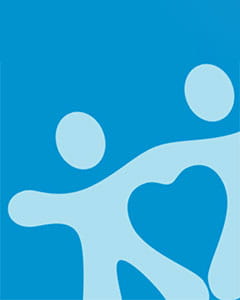How the ketogenic diet can help patients with Epilepsy
In honor of Epilepsy Awareness Month, please welcome our guest contributor, Kelly Urbanik. Kelly is a Registered Dietitian at Arnold Palmer Hospital. She has been working with the Ketogenic Diet Therapy Program for the past 6 years and has worked with over 125 patients for this specialized therapy.
As a Registered Dietitian at Arnold Palmer Hospital I get a lot of questions about my role at the hospital and what exactly I do. Do I work in the kitchen? Do I recommend diets? Do I help people lose weight? Usually, my first response is, “I have the best job in the world…I get to use food to help stop seizures.” What??...
The Ketogenic Diet has been around since the 1920s, but many people are still not familiar with this unusual treatment for epilepsy. The Ketogenic Diet is a high fat, moderate protein, low carbohydrate diet. It is different from other low carbohydrate diets in that it requires about 90% of your calories to come from fat and is used specifically to treat children with seizures that are not being controlled with medicine. The goal of the diet is to change the brain from using its normal source of energy, which is sugar (also known as “glucose”), to using fat. No one knows exactly how it works, but for 2/3 of the children who try the diet, it will reduce their seizures by at least 50%. Of the children who respond to the diet, about half of those will have a 90-100% reduction in seizures!
The patients I work with start the diet in the hospital. It usually takes about 3 days to safely change the brain over to using fat for energy. Once the brain is using fat for energy it is in “ketosis”, which is why it is called the “Ketogenic” Diet. During the time in the hospital, I work with the patient and their family to teach them about the diet. They learn how to measure and prepare certain foods or formula that are used to provide enough fat. Every bit of food is measured exactly, using a special scale that measures in grams. In addition, the family is taught how to check the urine or blood to ensure the patient is in “ketosis” before leaving the hospital. They also learn what to do if the child gets sick and cannot eat. It is very important that a child starts the diet in the hospital as there is a risk of low blood sugar, increased seizures, and abnormal labs when the diet is started. When the patient and family leave the hospital they are prepared to continue the diet at home with the help of their neurologist and dietitian.
It is always a great feeling to hear that the diet is working and a child’s seizures are gone, but even those families whose children don’t respond to the diet are always thankful. They have given the diet a chance and are now ready to move on to try another therapy. The families I work with are very motivated to do the best for their child. These families find creative ways to give a very strict diet to their children every single day. Of course, the best Ketogenic Diet tips and recipes have come from parents.
So, as a Registered Dietitian at the hospital, I am able to work with amazing families who are ready to give their child a half stick of butter or a cup of heavy whipping cream to see if they can help improve the quality of their child’s life. We get to laugh together, learn together, cry together and give food a chance to change a life…and in over half of these children, it does! That’s why I love my job.
To learn more about the Ketogenic Diet and other diet alternatives for Epilepsy, check out this webinar with Kelly Urbanik, RD, and Dr. Jana Kojic, MD, sponsored by the Epilepsy Association and EpilepsyU: Ketogenic Diet Webinar
More Resources:The Charlie Foundation – www.charliefoundation.org
Matthew’s Friends – www.matthewsfriends.org
MyKetoCal – www.myketocal.com







